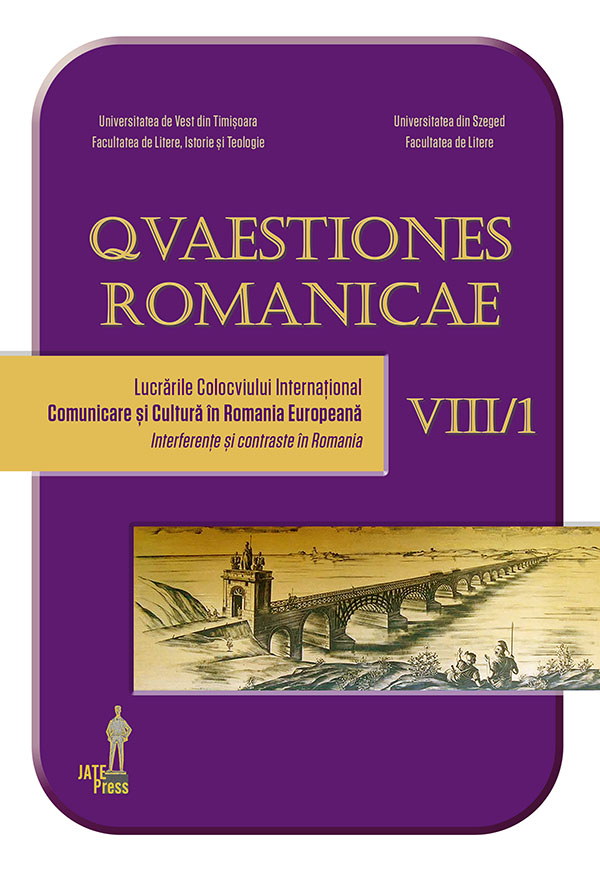Biserica necalcedoniană siro-iacobită în secolele VI-VII
Abstract: (The Non-Chalcedonian Syro-Jacobite Church during the 6th and 7th Centuries) Our study aims to outline the main stages of the establishment and organization of the Syro-Jacobite Church throughout the 6th and 7th centuries. Likewise, we intend to present the organization of the Syro-Jacobite Church, as well as its relations with the monophysite sister churches (the monophysite Church of Alexandria). The Syro-Jacobite church has two founders: Patriarch Severus of Antioch and Bishop Jacob Baradaeus. The latter laid the foundations of a monophysite church hierarchy parallel to that of the Melkite Church. In 557, Jacob Baradaeus ordained Sergius of Tella as the patriarch of the Jacobite Church. The Jacobean bishops and patriarchs did not establish their residence in the bishops' centres in the cities, where the Chalcedonian bishops resided, but in monasteries. At the time of the conquest of Syria by the Arabs (636), the territorial area of the Syro-Jacobite Church extended between Armenia, to the north and Palestine, to the south and respectively, from the shores of the Mediterranean Sea, to the west and to Mesopotamia, to the east. The Jacobite patriarchs of Antioch maintained good relations with the Monophysite Church of Alexandria. Emperor Heraclius initiated negotiations for religious union with the hierarchs of Jacobite Church (Metropolitan Isaiah of Edessa and Patriarch Athanasius Camelarius), which ended in failure. The Jacobite church was not a "national" church; it was to define its identity in concrete terms, rejecting the Greek language or at least restricting its use in favour of the Syrian language.
Keywords: The Syro-Jacobite Church, Monophysicism, Jacob Baradaeus, Heraclius Emperor, church union.
Rezumat: Studiul nostru își propune să traseze principalele etape ale întemeierii și organizării Bisericii siro-iacobite de-a lungul secolelor al VI-lea și al VII-lea. În egală măsură, ne propunem să prezentăm organizarea Bisericii siro-iacobite, precum și relațiile acesteia cu Bisericile monofizite surori (Biserica monofizită din Alexandria). Biserica siro-iacobită are doi întemeietori: patriarhul Sever al Antiohiei și episcopul Iacob Baradai. Acesta din urmă a pus bazele unei unei ierarhii bisericești monofizite paralelă cu cea a Bisericii melkite. În 557, Iacob Baradai l-a hirotonit pe Sergiu de Tella ca patriarh al Bisericii iacobite. Episcopii și patriarhii iacobiți nu și-au stabilit reședința în centrele episcopale din orașe, unde rezidau episcopii calcedonieni, ci în mănăstiri. În momentul cuceririi Siriei de către arabi (636), aria teritorială a Bisericii siro-iacobite se extindea între Armenia, la nord și Palestina, la sud și respectiv, de la țărmul Mării Mediterane, la vest și până în Mesopotamia, la est. Patriarhii iacobiți ai Antiohiei au păstrat bune relații cu Biserica monofizită a Alexandriei. Împăratul Heraclie a inițiat tratative de unire religioasă cu ierarhii Bisericii iacobite (mitropolitul Isaia al Edessei și patriarhul Atanasie Camelarius) care s-au încheiat cu un eșec. Biserica iacobită nu era o biserică „națională”; ea urma să-și definească în mod concret identitatea, respingând limba greacă sau cel puțin restrângând utilizarea acesteia, în favoarea limbii siriace.
Cuvinte-cheie: Biserica siro-iacobită, monofizism, Iacob Baradai, împăratul Heraclie, unire bisericească.
